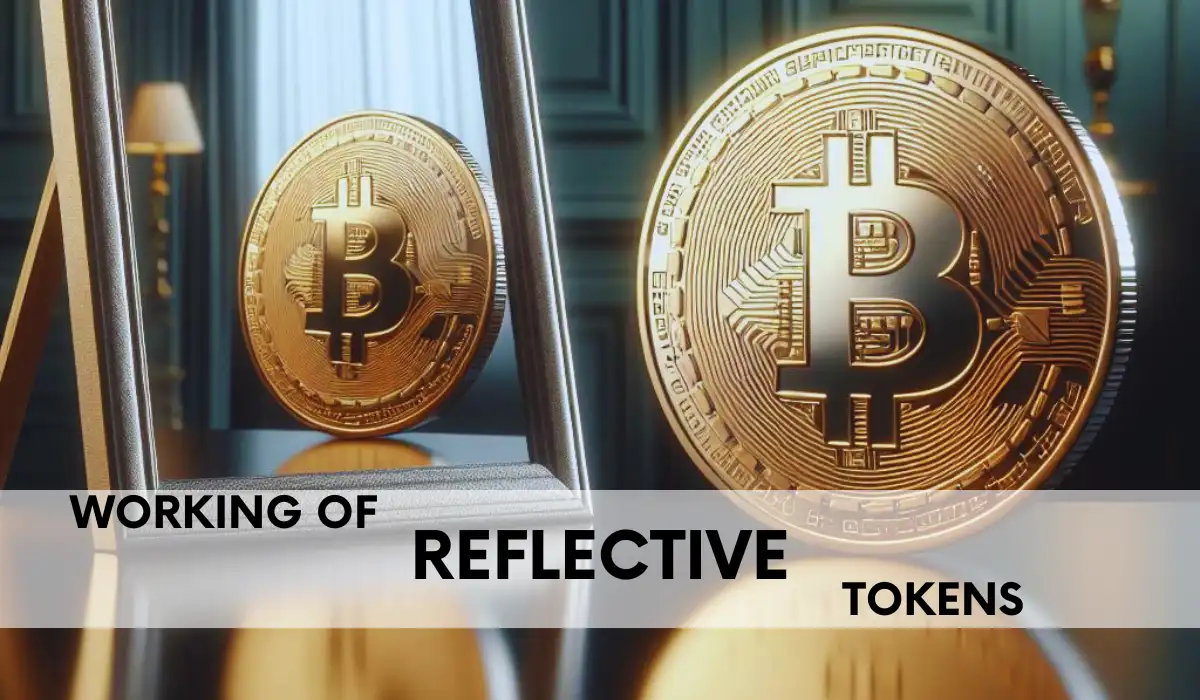Reflection tokens, also known as reward tokens, are cryptocurrencies that reward holders with new tokens in their wallets by employing a mechanism of taxing the transactions and redistributing the tax charged to the holders of the token.
Each transaction involving projects involving reflection tokens is subject to a penalty tax, which is determined by a percentage.
Thereafter they give out the fee to the token holders depending on the percentage of assets they hold.
The holders of reflection tokens need not lock their assets for a certain period to earn rewards and in most cases, earn their rewards instantly when a transaction is made.
The users can also deposit their tokens in third-party lending and yield farming contracts to earn extra yields.
Tokens like this provide holders with passive incomes with the distribution of rewards even though they carry specific risks that could impact investor profitability.
Working of reflection tokens
The working of reflection tokens is made possible by an automated token distribution mechanism which is called “refection”.
Smart contracts, which are self-executing contracts with the conditions of agreement encoded directly into the code, are used by the system.
These tokens pay the holders of the coin without having to move any money and lock up the tokens in the staking pool.
The benefit of reflection tokens is that they improve market stability as the lack of need to buy, sell, move, stake, or lock up their coins limits the volatility in the market. It improves liquidity as it facilitates transactions as holders are rewarded for holding the coin.

Such movement of money and selling and buying is discouraged by the tax system as transacting the coin is taxed Liquidy mining, staking, and yield farming are common practices in the crypto market due to the growth in the DeFi ecosystem.
By locking the crypto as a deposit for specific periods the users can earn interest. There is a risk in the potential decline in the valuation of locked assets as the rewards earned dilute the asset’s value. The reflection coin system aims to offer staking-like benefits without the necessity of locking tokens.
There are a lot of reflection coins in the market and they differ greatly in their features. Once decided on the coin, the tokens need to be purchased with stable coins or major cryptocurrencies like BTC, USDT, etc.
Thereafter the freshly bought cryptocurrencies should be swapped for tokens of choice which can be done through a swapping platform.
Once a token is bought tax should be paid and from the moment tokens can be stored in the wallet rewards can be earned with no further actions.
Are reflection tokens worth investing in?
Currently, reflection coins are associated with altcoins and meme coins. The main purpose of reflection coins is to maintain and increase the liquidity pool of a network and they serve the purpose of a cryptocurrency ecosystem.
The growth of reflection depends on the crypto adoption in the coming years as investors look for sources of passive income.
The reflection tokens carry a transaction tax where users transact reflection tokens. The initial buyers have to pay a transaction which which they can recoup only if the project gains adoption and therefore it could take months for the investors to see profits.
On the other hand, scammers could misuse the growing reflection token trends and dupe investors into paying initial transaction taxes and escape with the money collected.
The returns from reflection tokens can be inconsistent as the yield depends on assets day to day-to-day volume and therefore there is a possibility that tokens may generate zero yield in the event of a lack of activity on its network
Which are the popular reflection tokens?
Some of the popular reflection tokens include SafgeMoon(SAFEMOON), Baby Floki(BABYFLOKI), FlyPaper(STICKY), MinersDefi(MINERS) and EverGrow coin(EGC).
EverGrow coin’s price at launch was $.00000000732 and at present it is $.000000098.The network fee of this coin is 2% and it distributes them in Binance USD tokens to ECG holders.
The current saturation is that the transactions on its network have died down after early hype. But recently some movements have been seen in the volume of transactions. Less volume results in lower rewards for EGC holders.
Conclusion
Relection tokens are an innovative approach in the cryptocurrency landscape that offers a passive income stream to holders through a transaction tax redistribution mechanism.
These tokens do not require locking assets thus providing liquidity and stability to the market. Even though transaction tax can be a source of rewards it can also be a barrier to entry and profitability.
As the technology is nascent it could be exploited by unscrupulous actors. With the growth of the cryptocurrency ecosystem reflection tokens may play a significant role in shaping further DeFi and passive income strategies.
Investment in reflection tokens must be made after careful diligence and understanding the possibility of inherent risks linked to their volatility.
